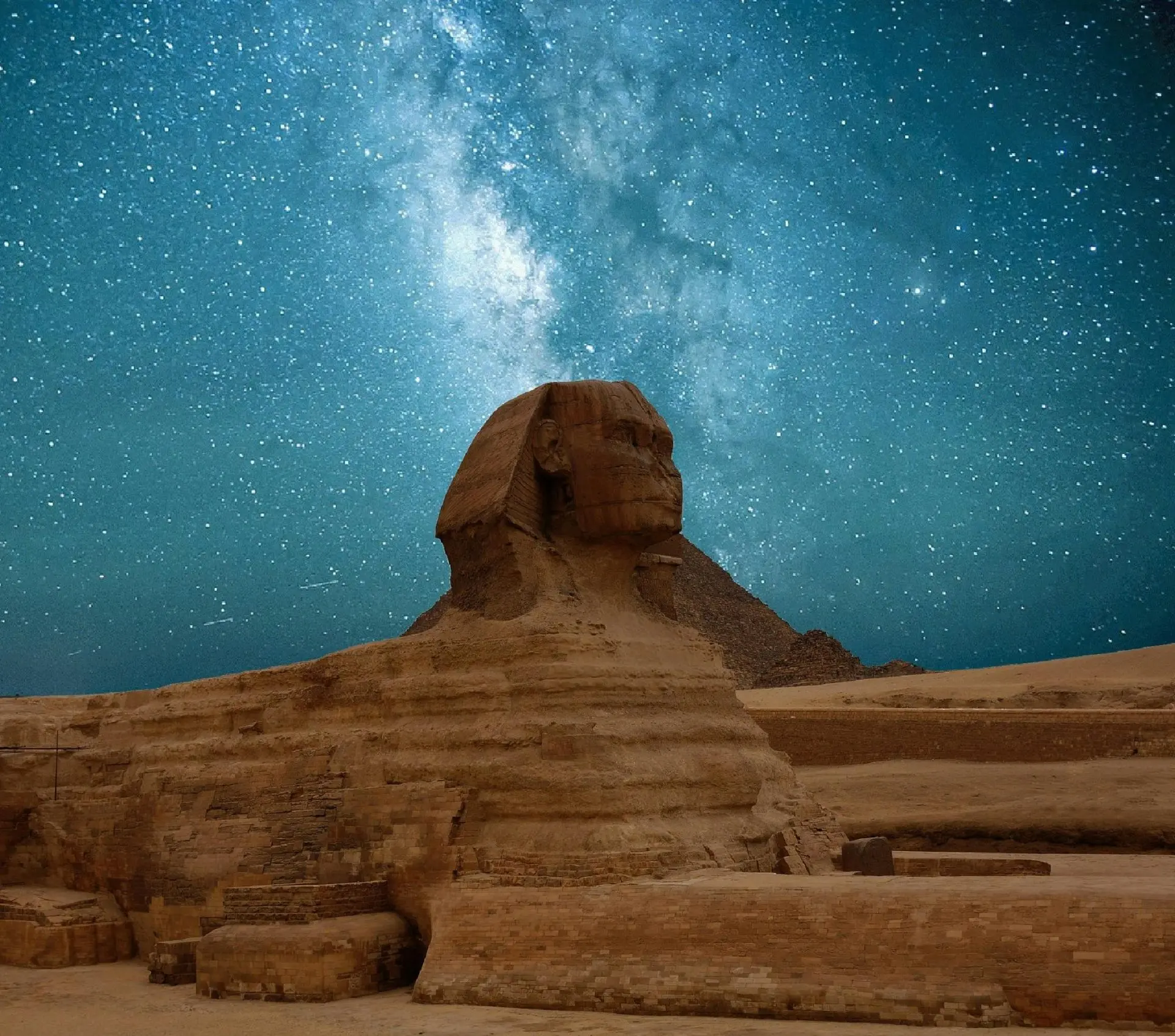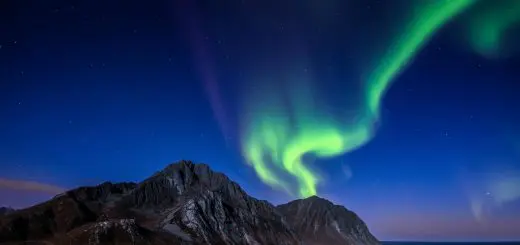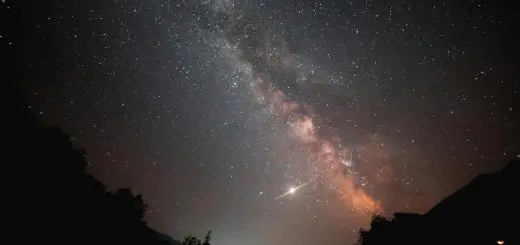Why Do Ghosts Appear at Night?

Looking for more amazing products? Check out our online store and explore our collection here! Happy shopping!
Before diving in, please note: This post is for informational purposes only. If you’d like to know more about how we approach topics, feel free to check out our friendly Disclaimer Page.
Hey there, amazing readers! 
We’re committed to delivering quality posts, and your support (even just sticking around despite the ads) means everything to us. So, bear with us, and thanks for helping us keep the good vibes rolling. Now, on to the fun stuff!
TRANSLATE BUTTON AT THE END OF THE ARTICLE
A Quick Overview
Ghosts have fascinated us for centuries, capturing our imaginations and stirring our fears.
Nighttime often serves as the stage for these eerie encounters.
Whether they’re shadows slipping through the darkness or whispers echoing in the stillness, many believe that spirits are more likely to make their presence known after the sun goes down.
In this article, we will delve into the reasons behind this spooky phenomenon, exploring the science, psychology, and historical beliefs surrounding nighttime ghostly appearances.
The Mystique of Nighttime: Why Ghosts Are Active
Night brings with it a sense of mystery.
When the sun sets, our surroundings transform.
Familiar rooms take on new shapes, and shadows seem to dance in the corners of our vision.
It’s easy to see why many report ghostly encounters when darkness envelops their world.
Atmospheric Shift: The natural world becomes quieter at night.
This tranquility can amplify sounds and sensations, making even the slightest noise feel significant.
Psychological Effects: Our minds become more susceptible to fear in the dark.
We often feel more vulnerable, which can make us more receptive to experiences we might dismiss during daylight.
Cultural Context: Many cultures throughout history have associated nighttime with the supernatural.
Folklore often describes spirits roaming the earth under the cover of darkness.
Sleep and Dreams: Much of our subconscious activity happens while we sleep.
Some believe that spirits can communicate with us more easily during this time.
The Night Owl Phenomenon: Those who stay up late may be more open to experiences outside the ordinary, possibly because they are more attuned to the stillness of the night.
Rituals and Beliefs: Midnight is often thought of as a witching hour or a time when the veil between worlds is thinnest.
Many rituals are performed at night to connect with the spirit world.
Heightened Awareness: When night falls, our senses might sharpen as we become more alert to potential dangers, opening us up to perceiving ghostly presences.
Loneliness: Nighttime can feel isolating, making it easier for people to feel a connection with those who have passed on.
Traditions: Many ghost stories emphasize nighttime encounters, feeding into our collective imagination and expectations.
The Power of Suggestion: The more we hear about ghosts being active at night, the more likely we are to notice strange occurrences.
Understanding why ghosts seem to thrive in the night may give us a new perspective on our own experiences.
Exploring the Science Behind Nighttime Hauntings
Now, let’s dig into the science.
While the presence of ghosts isn’t scientifically proven, several physical and psychological factors contribute to the belief in nighttime hauntings.
Visual Perception: Our eyes perceive light and shadow differently at night.
Low light can create illusions, turning mundane objects into ghostly figures.
Auditory Perception: Sound travels differently in the dark.
Subtle noises can be amplified, creating eerie echoes that might feel supernatural.
Infrasound: Some researchers suggest that low-frequency sounds (infrasound) could cause feelings of unease.
Places believed to be haunted often have these frequencies, which can occur naturally or through human-made sources.
Sleep Paralysis: This phenomenon can cause vivid hallucinations during the transition between sleep and wakefulness.
Many describe seeing dark figures, often interpreted as ghosts.
Hallucinations: Extreme tiredness can lead to visual and auditory hallucinations.
When people are sleep-deprived and scared, they may misinterpret their environment.
Magnetic Fields: Some studies suggest that fluctuations in the Earth’s magnetic field can affect our brain chemistry, possibly leading to feelings of discomfort or the sense of presence.
Temperature Changes: Many report feeling cold spots before ghostly encounters.
This could be linked to the way our bodies respond to temperature changes at night.
Biological Rhythms: Our circadian rhythms influence our alertness.
As we wind down for the night, our brains may become more suggestible to paranormal experiences.
Fear Responses: The fight-or-flight response can heighten our senses, making us more aware of the unknown, thus increasing our likelihood of experiencing ghostly phenomena.
Cognitive Bias: Our brains are wired to find patterns.
When we hear noises or feel a chill, we may interpret those sensations as ghostly activity due to our predisposition to connect dots.
These scientific factors can amplify our beliefs and experiences, contributing to the nighttime ghost phenomenon.
The Role of Darkness in Ghostly Encounters
Darkness has a profound effect on our psyche.
It evokes fear and uncertainty, creating an atmosphere ripe for ghostly tales.
Fear of the Unknown: Darkness obscures our vision, making us more anxious about what lies ahead.
Ghosts thrive on that fear.
Cloak of Invisibility: The absence of light allows for the possibility of unseen entities moving unnoticed.
Introspection: At night, we often have time to reflect.
In moments of solitude, our thoughts can wander, making us more open to ghostly interpretations.
Social Isolation: Many ghost stories arise from solitary experiences during the night, where individuals feel more vulnerable.
Environmental Factors: The stillness of night lends itself to unusual occurrences, whether they are natural or imagined.
Cultural Significance: Many cultures have night rituals or stories tied to darkness, reinforcing the idea of nighttime as a time for ghosts.
Dream States: Nighttime is also when we dream.
Some believe dreams can serve as a bridge between our world and the spiritual realm.
Altered States of Consciousness: As we enter sleep, our consciousness changes, potentially allowing for different experiences, including ghostly visits.
Folklore and Mythology: Many ghostly tales originate at night, embedding these ideas in our collective consciousness.
Symbolism of Darkness: Darkness often symbolizes death in many cultures, enhancing the association between the night and the spirit world.
These aspects of darkness contribute significantly to the ghostly narrative that has persisted through time.
Historical Beliefs About Nighttime Spirits
Throughout history, cultures have woven intricate tales about spirits and their connection to the night.
Ancient Civilizations: Many ancient cultures believed in gods and spirits that emerged at night, often linked to the lunar cycle.
Folklore: From the Banshee in Irish folklore to La Llorona in Latin American tales, nighttime spirits have served as cautionary figures.
Rituals and Offerings: In various cultures, offerings to spirits often took place at night, as it was believed to be their active time.
Religious Texts: Many religious traditions discuss spirits and their interactions with the living, often emphasizing night as a time for activity.
Superstitions: Common superstitions suggest that night is a time when the veil between worlds thins, allowing spirits to roam freely.
Ghost Stories: These age-old narratives often depict nighttime as when spirits seek revenge or closure, engaging listeners’ imaginations.
Cultural Traditions: Festivals like Dia de los Muertos celebrate the spirits of the deceased, showcasing the belief in their presence at night.
Dream Interpretation: Many cultures have viewed dreams as messages from the dead, suggesting that night blurs the lines between life and death.
Folkloric Creatures: Nighttime has been associated with various creatures, such as vampires and werewolves, further instilling fear and fascination.
Mysterious Phenomena: Historical accounts of unexplained phenomena at night have contributed to the belief in ghosts and spirits.
These historical beliefs create a tapestry that enriches our understanding of why ghosts are often connected to the night.
Are Ghosts More Active When We Sleep?
Many anecdotes suggest that ghosts are particularly active while we sleep.
What might explain this intriguing assertion?
Dream State Interaction: Some theorists propose that our dreams may serve as a channel for communication with spirits while we are unconscious.
Sleep Paralysis: This experience often involves vivid hallucinations, with many reporting feeling the presence of a ghost or spirit while paralyzed.
Subconscious Processing: Our minds process emotions and experiences during sleep, possibly making us more open to ghostly encounters.
Altered Consciousness: The transition between wakefulness and sleep can create a liminal space where spirits might interact more readily.
Cocoon of Darkness: When we sleep, we are in a vulnerable state, often surrounded by darkness, which can amplify feelings of being watched.
Nightly Rituals: Some cultural practices involve attempting to communicate with spirits during sleep or through dreams.
Heightened Sensitivity: Some individuals report increased sensitivity to spiritual experiences when they are in a relaxed state, such as before sleep.
Vivid Nightmares: Nightmares can sometimes incorporate ghostly elements, leading individuals to believe encounters are real.
Historical Perspectives: Many cultures have beliefs around sleep and spirits, suggesting that nighttime is a favored time for ghostly visits.
Shared Experiences: Friends and family often report similar experiences during sleep, reinforcing the notion that ghosts might be more active at night.
These insights help illuminate why many feel that the nighttime is ripe for ghostly encounters.
The Influence of Moonlight on Ghost Activity
Moonlight has often been associated with mystery and the supernatural.
But what is its influence on ghostly activity?
Illumination: Moonlight can create a hauntingly beautiful atmosphere, allowing shadows to play tricks on our eyes.
Cultural Symbolism: The moon has been a symbol of mystery and change in various cultures, influencing beliefs about spirits.
Lunar Phases: Some believe that certain phases of the moon, especially the full moon, enhance ghostly activity.
Romantic Associations: The moonlit night often evokes romantic feelings, which can lead to heightened emotional states, affecting perceptions of the supernatural.
Nighttime Rituals: Many rituals tied to spirit communication are performed during specific lunar phases, reinforcing the moon’s influence.
Confidence in the Dark: A bright moon can make individuals feel more secure, potentially leading to unexpected ghostly encounters.
Historical Accounts: Folk tales often mention spirits appearing during nights with a bright moon, making it a common theme in ghost stories.
Astronomical Events: Eclipses and other celestial events have historically been tied to supernatural occurrences, adding to the lore surrounding nighttime.
Natural Phenomenon: Animals often behave differently during moonlit nights, which can add a layer of intrigue to ghostly experiences.
Psychological Effects: The beauty of a moonlit night may inspire creativity, leading to heightened emotions and openness to ghostly encounters.
The interplay of moonlight and ghostly narratives adds another layer to the rich tapestry of nighttime experiences.
Tales of Ghostly Encounters During the Night
Let’s take a moment to explore some fascinating and chilling tales of nighttime ghost encounters.
The Haunted Hotel: Many hotels boast spooky tales, with guests reporting strange noises, flickering lights, and apparitions during the night.
The Woman in White: A common specter reported across cultures, this ghost often appears at night, signaling loss or tragedy.
The Ghostly Hitchhiker: Stories abound of drivers picking up a hitchhiker only to find they vanish once they reach their destination.
The Restless Soldier: During war memorials, many recount seeing soldiers’ spirits wandering at night, honoring their sacrifice.
Local Legends: Small towns often have ghost stories tied to historical events, where spirits are said to wander the streets at night.
The Family Home: Many families report feeling a presence in their homes at night, often connected to previous occupants.
Campfire Stories: Campers often share ghost tales around the fire, heightening their senses to the spooky sounds of the night.
Vengeful Spirits: Some individuals recount tales of encountering spirits seeking to right wrongs or deliver messages.
Supernatural Investigations: Ghost hunters often find that nighttime investigations yield more compelling evidence of paranormal activity.
Shared Experiences: Friends recounting similar ghostly encounters lend credibility to the belief that something otherworldly lurks in the night.
These stories enrich our understanding of the connection between the night and ghostly encounters.
Why Our Senses Heighten After Sunset
As the sun sets, something magical happens.
Our senses seem to kick into overdrive.
Increased Alertness: When darkness falls, our instinct to protect ourselves sharpens.
We become attuned to every sound and movement.
Heightened Fear Response: The unknown can walk hand-in-hand with fear.
This heightened state makes us more aware of our surroundings.
Ramped-Up Imagination: The dark allows our minds to roam freely.
Our imagination can weave stories from shadows and sounds.
Physical Changes: The body can react to darkness with increased adrenaline, making us feel more on edge.
Sensory Adaptation: Our eyes adjust to the lack of light, often leading to visual distortions that can feel eerie.
Sound Amplification: In the stillness of night, even the faintest rustle can sound significant, leading to feelings of unease.
Emotional Vulnerability: The quiet of night often allows us to reflect on emotions, making us more open to supernatural interpretations.
Cultural Conditioning: Movies and stories reinforce nighttime as a time for suspense, making us more on edge as the sun goes down.
Biological Rhythms: As we transition from day to night, our bodies go through changes that can enhance our awareness.
Collective Anxiety: Society often shares a collective fear of the dark, making us more likely to feel ghostly presences.
This heightened awareness at night is both fascinating and frightful, contributing to our experiences with the supernatural.
The Psychological Effect of Nighttime Fear
Fear can have a powerful effect on our perception of reality, especially at night.
Instinctual Responses: Fear is an ancient instinct designed to protect us.
In darkness, it can trigger investigative behaviors.
Stories of Terror: The more we consume horror stories, the more they shape our expectations and fears about nighttime.
Isolation: Being alone at night can amplify feelings of fear, making us more likely to interpret normal sounds as ghostly.
Cognitive Dissonance: When we experience something we cannot explain, our brains may seek out answers, often leading to supernatural conclusions.
Personal Beliefs: Our beliefs shape our experiences.
If we believe in ghosts, we might see them more often at night.
Group Dynamics: It’s interesting how fear can be contagious.
A group of friends may amplify each other’s fears, making ghostly encounters feel more common.
Sleep Deprivation: Lack of sleep can lead to heightened anxiety, making nighttime feel even more intimidating.
Cultural Narratives: Ghost stories often play on our fears, reinforcing the idea that nighttime is when the supernatural occurs.
Vivid Imagination: The mind can create vivid scenarios in the dark, leading to feelings of dread and the anticipation of the unknown.
Therapeutic Reflections: Nighttime also encourages introspection, sometimes revealing fears we might not confront during the day.
Understanding how fear operates at night can help us approach our experiences with a more balanced perspective.
How Culture Shapes Our View of Nighttime Ghosts
Culture plays a significant role in shaping how we perceive ghosts and their nighttime activities.
Folkloric Tradition: Many cultures have passed down ghost stories that often revolve around nighttime events, creating a collective belief in their presence.
Art and Literature: Ghosts have long been featured in literature and art, particularly in nighttime settings, reinforcing their eerie association with darkness.
Cultural Rituals: Festivals and rituals that honor the deceased often take place at night, emphasizing the connection between spirits and darkness.
Media Representation: Movies and television shows frequently depict ghosts appearing at night, shaping our expectations and fears.
Religious Beliefs: Different religions have various beliefs around spirits, often linking them to nighttime occurrences and rituals.
Local Legends: Each community has its tales, often tied to historical events that occurred at night, weaving a rich tapestry of ghostly culture.
Cultural Sensitivity: Different cultures approach the idea of ghosts and death uniquely; some celebrate spirits, while others fear them.
Ritual Significance: The time of day can change the significance of rituals, with nighttime often symbolizing mystery and connection to the unknown.
Ghost Hunting Culture: The rise of ghost hunting shows has popularized the idea that ghosts are more active at night, influencing public perception.
Social Narratives: Cultural narratives around death and the afterlife shape how individuals perceive nighttime ghost encounters.
Culture enriches our understanding and experience of nighttime ghosts, providing context for our fears and fascinations.
Tips for Embracing the Night with Joyful Curiosity
If nighttime ghost stories intrigue you, here are some tips for embracing the mystery with a cheerful mindset!
Investigate: Grab a flashlight and explore dark corners of your home or neighborhood.
You might discover something unexpected!
Share Stories: Gather with friends to swap ghost stories.
It can be fun and a little spooky!
Study Folklore: Dive into the folklore of your area.
You might uncover fascinating tales that enrich your understanding of the night.
Try Night Photography: Capture the beauty of the night.
You might find that moonlit scenes are more enchanting than eerie!
Attend Local Events: Join ghost tours or local events that celebrate nighttime stories.
They can be a fun way to learn and explore.
Create a Ritual: Develop a nighttime ritual that helps you feel safe and connected, whether it’s through meditation, lighting a candle, or journaling.
Host a Sleepover: Invite friends over for a late-night ghost story session.
Laughter and shared fears can create lasting memories!
Explore the Night Sky: Stargazing can shift your focus from spooky thoughts to the wonders of the universe.
Write Your Own Stories: Channel your creativity by writing ghost stories or poems inspired by your nighttime experiences.
Stay Curious: Approach the night with curiosity rather than fear.
Consider what mysteries it holds rather than what terrors it might bring.
Embracing the night with an open heart can lead to joyful discoveries and a deeper appreciation for its mysteries.
Conclusion: Embracing the Mystery of Nighttime Ghosts
The phenomenon of ghosts appearing at night combines cultural beliefs, scientific perspectives, and psychological factors.
As we navigate these intriguing tales, we can choose to approach the unknown with curiosity and whimsy rather than fear.
Whether it’s sharing spine-tingling stories with friends, exploring local legends, or simply enjoying the beauty of a moonlit night, embracing the mystery can be a part of our human experience.
After all, the night is not just a time for ghosts; it’s an invitation to wonder, imagine, and perhaps even connect with the supernatural in our own unique ways.
So, the next time the sun dips below the horizon, remember to keep your heart open and your mind curious—who knows what enchanting experiences the night might hold?

The Enlightenment Journey is a remarkable collection of writings authored by a distinguished group of experts in the fields of spirituality, new age, and esoteric knowledge.
This anthology features a diverse assembly of well-experienced authors who bring their profound insights and credible perspectives to the forefront.
Each contributor possesses a wealth of knowledge and wisdom, making them authorities in their respective domains.
Together, they offer readers a transformative journey into the realms of spiritual growth, self-discovery, and esoteric enlightenment.
The Enlightenment Journey is a testament to the collective expertise of these luminaries, providing readers with a rich tapestry of ideas and information to illuminate their spiritual path.
Our Diverse Expertise
While our primary focus is on spirituality and esotericism, we are equally passionate about exploring a wide range of other topics and niches 

To ensure we provide the most accurate and valuable insights, we collaborate with trusted experts in their respective domains 
Our blog originally focused on spirituality and metaphysics, but we’ve since expanded to cover a wide range of niches. Don’t worry—we continue to publish a lot of articles on spirituality! Frequently visit our blog to explore our diverse content and stay tuned for more insightful reads.
Hey there, amazing reader! 
Check out our store here and take a peek at some of our featured products below! Thanks for being awesome!










